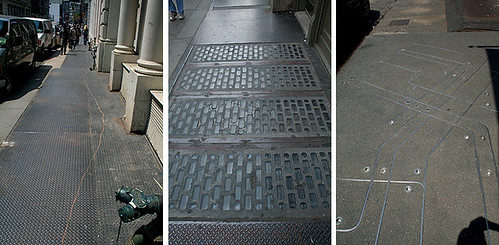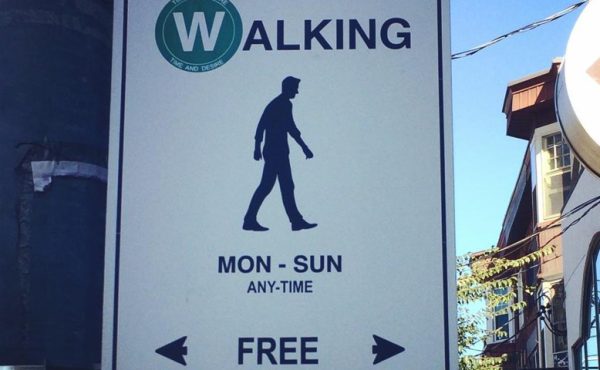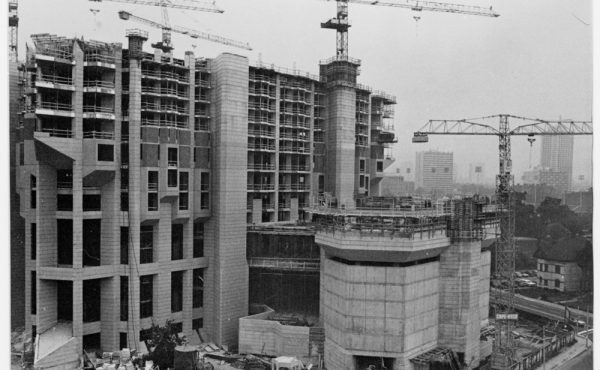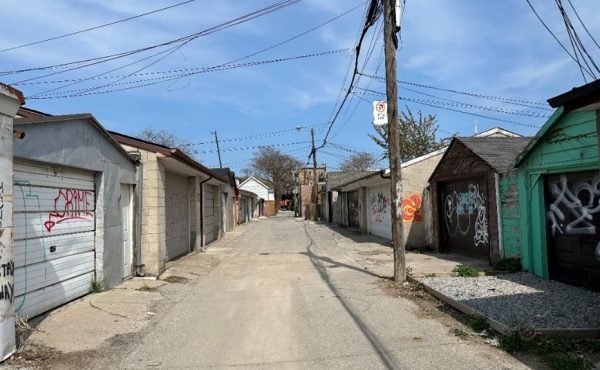
NEW YORK — The sidewalks of New York are probably the most varied and interesting of any city I lived in. The sidewalks are a mish-mash of huge granite blocks, concrete, metal grates and glass block. Because there are no back alleys, the buildings were built with a 5-to-10-foot setback with steel grates that opened up to basement stairs for deliveries.
In some of the older industrial areas such as Soho and Chelsea it’s common to see sidewalks half paved with granite or concrete and the other half covered over with steel. Because the basements of the buildings extend under this portion of the sidewalk, areas which were not required to have access were covered in concrete or steel panels with various shaped glass inserts to allow light to penetrate into the basements (middle photo, above). This has a beautiful effect at night as the light also shines up through these glass inserts, giving the sidewalk an incredibly light and delicate appearance reminiscent of lace.
As many of these neighbourhoods were developed almost 160 years agom, it is not uncommon for the sidewalks to be constructed of blocks of granite measuring 8 inches thick and 10 feet square. If you look closely you will notice the detail and attention paid to the insertion of manhole and utility covers into this stone. Each hatch or cover is carved with a half-inch groove to draw the water away from the opening and towards the gutter (photo below, right).
Although there are no sidewalk stamps, the mark of dedicated craftsmen is still visible. Almost two centuries later, these giant blocks have become polished by the thousands of people who pass over them each day. It is estimated that the average stretch of sidewalk on 1st Avenue in the East Village sees 1,800 pedestrians move across any given block of sidewalk per hour. These numbers would probably be tripled in tourist areas like Soho.

This culture of creating interesting sidewalks hasn’t stopped with time. Surprisingly, building owners and the City have a great interest in the materials and design of sidewalks. A new stretch of sidewalk, also in Soho, is inlayed with stainless steel and references the older glass embedded sidewalks with small, one-inch lights which glow in the evening (photo, top right).
The fate of New York’s pedestrian realm greatly benefited from the organic development of a city without alleys. The average sidewalk right-of-way is no larger than that of the typical Toronto street, but because of the setback for basement access, the city is graced with wide and expansive sidewalks, capable of carrying thousands of people each hour. (Until you factor in the street vendors, but that’s a whole separate post on its own.)
A NOTE TO READERS:
Joe, a long-time Spacing magazine contributor, has just left his hometown of Toronto, and is now living in New York. He will be our Big Apple correspondent covering public space and related issues as frequently as possible. If there are any particular ideas or topics you would like him to cover, leave a comment or email Spacing Toronto.




12 comments
Joe, welcome to NY. We’ll see you at the next Canadian ex-pat event. Contact me if you want to talk NYC urban design anytime… we’ll start with a bike tour of the waterfronts – the best way to see the developing and historical public guts of the city.
Although I do love Toronto, I’m wildly jealous, Joe. I read the NY Times on a fairly regular basis, and there are interesting stories that pop up on public space, transportation, etc. that often have some relevancy or share a parallel with Toronto. I’m happy to hear we’d be talking about them here on Spacing.
My strongest memory of the Koolhaus Prada store in Soho is being in the basement area (I think where the shoes are) underneath those sidewalk glass blocks with all the New York feet walking above. Very neat. Only a handful of places in Toronto have that (and now that I think about it, I can’t remember where they are).
Then there’s the ConEd manholes that electrocute dogs.
http://www.nydailynews.com/news/2007/08/30/2007-08-30_dog_in_soho_hit_with_100volt_jolt-1.html
The Works: Anatomy of a City is a good book to start with if one is interested in New York City infrastructure.
That sounds like a good book.
I’ll second the recommendation for The Works. Very entertaining and informative.
I’m an ex-Torontonian hoping to make a move to NYC myself, to intern at some non-profits in the community-building sector — other than Project for Public Spaces and places like Sustainable South Bronx, does anyone have any tips on other organizations?
(Heading down to the city for a week today and doing some in-person research. Any tips would be great.)
Do you know if sea glass pieces can be added to aggregate sidewalks as they are being installed to create some interest and color?
glass expands and contracts at a different rate and so should only be used inside. it will crack out in an urban environmrnt
Well, those are a select few sidewalks. The vast majority in New York are not interesting in the slightest.
I would have to disagree with you Alfred. Although they are not all granite or have elaborate glass and steel grates they are an interesting collection of concrete, hatches, covers, and materials representing decades of change. It may not be beautiful but it tells a story of the changing city.